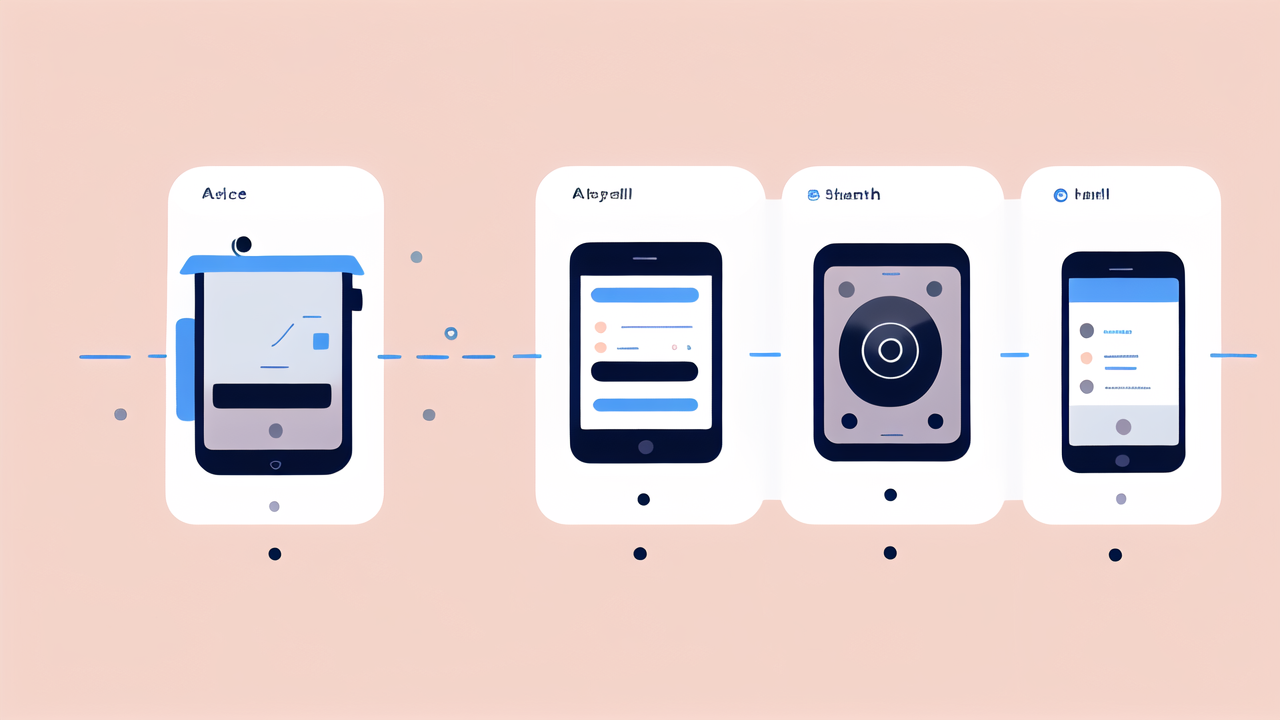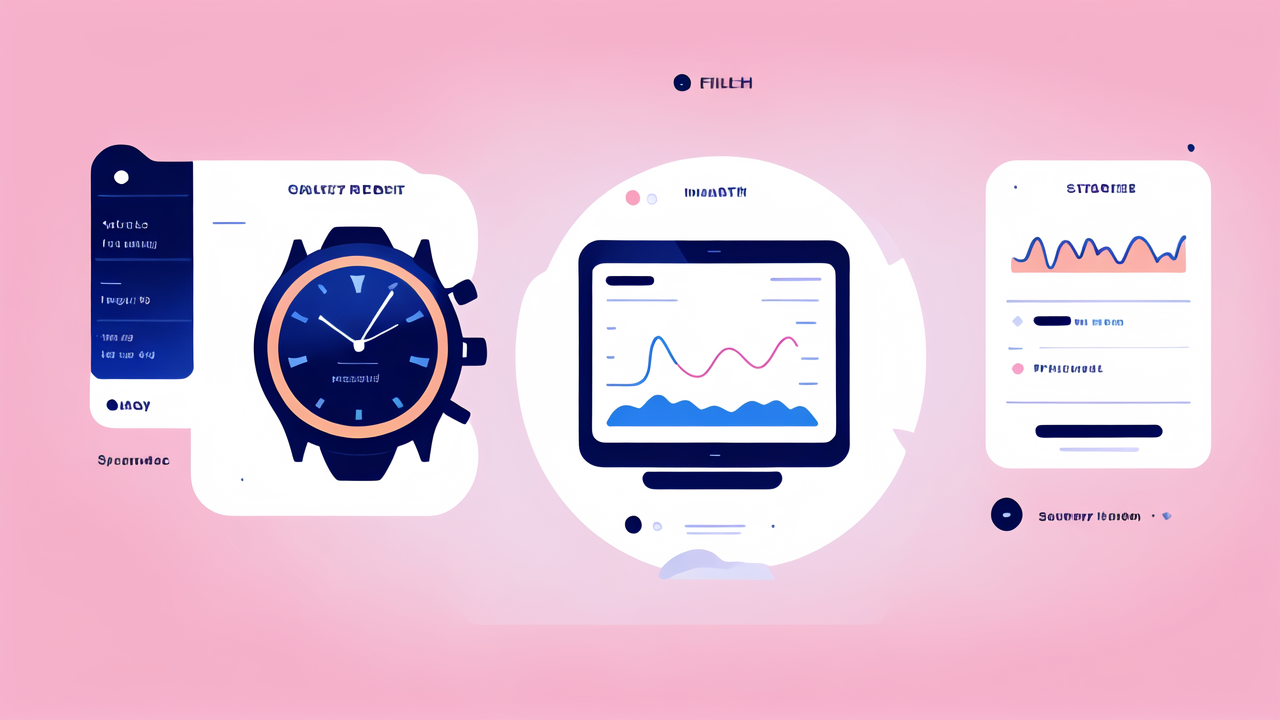The Rise of Smartwatches in Modern Society
A Brief History of Smartwatch Technology
Smartwatches have come a long way since their inception. The journey began in the 1970s with digital watches. These early devices could perform basic calculations and store small amounts of data.

In the 1980s, Seiko introduced the first computer watch. It could connect to external devices and store data. The 1990s saw the rise of more advanced features like GPS and heart rate monitoring.
The true smartwatch revolution began in the 2010s. Companies like Apple, Samsung, and Fitbit entered the market. They introduced devices with touchscreens, apps, and advanced sensors.
Today, smartwatches are powerful wearable computers. They offer a wide range of features beyond timekeeping. From fitness tracking to mobile payments, these devices have become integral to our daily lives.
Factors Driving the Popularity of Smartwatches in the United States
Several factors have contributed to the growing popularity of smartwatches in the US. One key driver is the increasing focus on health and wellness. Smartwatches offer features like step counting, heart rate monitoring, and sleep tracking.
Convenience is another major factor. Smartwatches allow users to check notifications, make calls, and send messages without reaching for their phones. This hands-free functionality is particularly appealing in busy lifestyles.
The integration with smartphones has also boosted adoption. Many smartwatches can seamlessly connect with phones, extending their functionality. This allows for a more connected and efficient digital experience.
Lastly, the fashion factor cannot be overlooked. Smartwatches have evolved from clunky gadgets to stylish accessories. Many brands now offer customizable designs to suit different tastes and occasions.
The Role of Consumer Technology in Today's Lifestyle
Consumer technology, including smartwatches, plays a significant role in modern lifestyles. These devices have become extensions of ourselves, helping us stay connected and informed.
Smartwatches, in particular, have carved out a unique niche. They serve as personal assistants on our wrists. From reminding us to move more to tracking our workouts, they help us lead healthier lives.
These devices also help manage our digital lives. They filter notifications, allowing us to stay connected without being overwhelmed. This balance is crucial in our always-on digital world.
Moreover, smartwatches are part of the broader Internet of Things (IoT) ecosystem. They can interact with other smart devices, enhancing home automation and personal productivity.
Technological Advancements in Smartwatches
Innovations in Health and Wellness Features
Health and wellness features have been at the forefront of smartwatch innovation. Early devices could count steps and monitor heart rate. Today's smartwatches offer much more sophisticated health tracking.

Many smartwatches now include ECG (electrocardiogram) capabilities. This feature can detect irregular heart rhythms, potentially identifying serious conditions like atrial fibrillation.
Blood oxygen monitoring is another recent addition. This feature became particularly relevant during the COVID-19 pandemic. It can help users track their respiratory health.
Sleep tracking has also become more advanced. Some smartwatches can now detect different sleep stages and provide detailed sleep quality analysis. This data can help users improve their sleep habits.
Stress monitoring is another area of innovation. Using heart rate variability and other metrics, smartwatches can now alert users to high stress levels and suggest relaxation techniques.
Breakthroughs in Connectivity and Smartwatch Integration
Connectivity has been a key area of advancement for smartwatches. Early models required constant connection to a smartphone. Now, many smartwatches offer standalone cellular connectivity.
This allows users to make calls, send messages, and stream music without a phone nearby. It's particularly useful for outdoor activities or emergencies when carrying a phone isn't practical.
NFC (Near Field Communication) technology has enabled contactless payments via smartwatches. Users can now make purchases with a simple tap of their wrist.
Voice assistants like Siri, Google Assistant, and Alexa have also been integrated into many smartwatches. This allows for hands-free control and information access.
Smartwatches are also becoming more integrated with other smart devices. They can control smart home devices, act as car keys, and even unlock computers.
The Impact of AI and Machine Learning on Smartwatch Functionality
Artificial Intelligence (AI) and Machine Learning (ML) are revolutionizing smartwatch functionality. These technologies are making smartwatches more intuitive and personalized.
AI algorithms can now analyze health data to provide more accurate insights. For example, they can detect patterns in heart rate or activity levels that might indicate health issues.
Machine learning models are improving activity recognition. Smartwatches can now automatically detect and track a wide range of exercises, from running to swimming to weight lifting.
AI is also enhancing the user interface. It can learn user habits and preferences to provide more relevant information and notifications at the right times.
Predictive features are another area where AI shines. Some smartwatches can now predict stress levels or potential health issues based on historical data and current trends.
The Future Landscape of the Smartwatch Industry
Emerging Trends in Smartwatch Features and Design
The future of smartwatches looks exciting, with several emerging trends. One key area is improved battery life. New technologies like micro-LED displays and more efficient processors are extending battery life.

Flexible displays are another trend to watch. Some companies are developing smartwatches with wrap-around screens, offering more display area and new interaction possibilities.
Biometric authentication is becoming more sophisticated. In addition to fingerprint sensors, some smartwatches are exploring features like wrist-based ECG for user identification.
Environmental sensors are also on the horizon. Future smartwatches might be able to detect air quality, UV levels, or even potential allergens in the environment.
Design-wise, we're seeing a trend towards more customizable and modular smartwatches. Users may be able to swap out components to upgrade or personalize their devices.
Regulatory Considerations for Health-Tracking Devices
As smartwatches incorporate more health features, regulatory considerations become crucial. Many health-tracking features fall under medical device regulations in various countries.
In the US, the FDA has established guidelines for health-related wearable technology. Companies must navigate these regulations carefully when introducing new health features.
Privacy is another key concern. Smartwatches collect sensitive health data, raising questions about data security and user privacy. Regulations like GDPR in Europe are shaping how companies handle this data.
There's also ongoing debate about the accuracy of health measurements from smartwatches. Regulators are considering how to ensure these devices provide reliable health information.
As smartwatches become more integral to healthcare, we may see more collaboration between tech companies and healthcare providers to ensure responsible innovation.
Predicting the Next Big Thing for Smartwatches
The future of smartwatches is likely to see even more advanced health monitoring. We might see features like continuous glucose monitoring or blood pressure tracking without the need for inflatable cuffs.
Mental health monitoring could be the next frontier. Smartwatches might use a combination of physiological data and user input to track mood and mental well-being.
Augmented reality (AR) integration is another exciting possibility. Smartwatches could project information onto the user's hand or arm, creating new ways to interact with digital content.
Enhanced connectivity with other devices is also on the horizon. Smartwatches might become central hubs for all our wearable tech, from smart glasses to health sensors.
Ultimately, the goal is for smartwatches to become even more seamless and intuitive parts of our daily lives. They may evolve into sophisticated health guardians and digital assistants that anticipate our needs before we even realize them.




Leave a comment
This site is protected by hCaptcha and the hCaptcha Privacy Policy and Terms of Service apply.